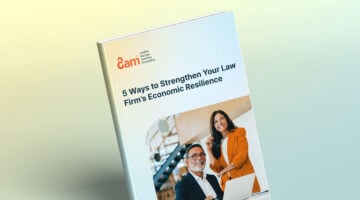 At the end of this month, U.S. News & World Report — the de facto regulator of law schools — will release its annual “Best Law School” rankings with a new methodology that accounts for student debt but penalizes racial and socioeconomic diversity. While the legal profession’s deficient progress toward diversity rears its head in report after report after report, this change should reignite efforts to reduce the influence of U.S. News on schools and applicants alike.
At the end of this month, U.S. News & World Report — the de facto regulator of law schools — will release its annual “Best Law School” rankings with a new methodology that accounts for student debt but penalizes racial and socioeconomic diversity. While the legal profession’s deficient progress toward diversity rears its head in report after report after report, this change should reignite efforts to reduce the influence of U.S. News on schools and applicants alike.
U.S. News derives immense power from claiming that a higher-ranked school is better than a lower-ranked school. Each year, the law school world overreacts to slightly shuffled U.S. News rankings, justifying the ranking’s apparent authority and value. Faculty circulate leaked copies of the rankings. Proud alumni and worried students voice concerns. Provosts threaten jobs. Prospective students confuse the annual shuffle with genuine reputational change.
Law school administrators react predictably with obsession and derision. They articulate methodological flaws and lament negative externalities, but nevertheless commit to the rankings rat race through their statements, press releases, actions, and inaction. These reactions cement the outsized impact of U.S. News on law school operations. As a result, this ranking plays a direct role in increasing legal education costs and decreasing the commitment schools can have to access, affordability, and innovation.

How Legisway Helps In-House Teams Manage All Legal Matters In One Trusted Place
Operate with AI driven insights, legal intake, unified content and modular scalability to transform efficiency and clarity.
The incentives it creates and hierarchy it reinforces complicate even the most basic reform conversations within law schools. So when U.S. News changes its methodology, anyone with an interest in legal education should pay attention. Law schools will change their behavior.
According to reporting by Mike Spivey from Spivey Consulting Group, U.S. News has made the following changes:
- +3% for average graduate debt among those borrowing (lower is better)
- +2% for the percentage of graduates borrowing (lower is better)
- -4% for selectivity (LSAT, GPA, acceptance rate)
- -1% for faculty resources (expenditures per student, student-faculty ratio)
I appreciate that U.S. News continues to recognize and grapple with some of the negative effects of its rankings. At first glance these changes seem promising. Fewer people borrowing and borrowing on average less are important goals related to law school affordability. Likewise, the reduced value on selectivity may help law schools make more holistic admissions decisions. But the devil is in the details. The easiest way to game these changes is to enroll more students who are wealthy.

Ready for What’s Next: 5 Ways to Strengthen Economic Resilience
Get five practical tips to spot cash flow red flags early, speed up payments, track spending in real time, and build stronger client trust through clear, transparent billing—download the ebook.
Already the proportion of wealthy students has increased dramatically over the past decade. Over 84% of 2010 graduates borrowed for law school. That percentage fell more than 11 points in 2019, to 73%.

Law school remains way too expensive to warrant viewing such a steep decline with anything but suspicion. More than 1 in 4 graduates did not need to borrow for law school despite an average tuition of $48,000 per year at private schools and $27,000 at public schools. At the top 20 schools, the percentage fell 15 points between 2010 and 2019, from 81% to 66%. Preliminary figures for 2020 graduates indicate an additional two-point decrease at the top 20 schools, while the overall rate of borrowing across all law schools declined an additional half-point.
The increase in law school scholarships — on the backs of students of color and low-income students — does not explain these trends. For example, the percentage of students who received a full-tuition scholarship or full-tuition scholarship plus living stipend increased by 4.4% between 2010 and 2019. A major gap remains even if each of those students did not borrow because of the financial award. Instead, the borrowing figures tell a story of a student body marred by price inequity and wealth inequality.
The U.S. News methodology change will reward the schools that continue this trend of enrolling wealthier students. Wealthy students who do not need to borrow will help a school lower/maintain its percentage borrowing. Wealthy students who borrow a relatively smaller amount will bring the average amount borrowed down because the average is among students who borrow at least $1 for law school. It’s a win-win for the law school that successfully targets offers of admission to these students, but our profession and those who depend on us lose.
Law schools may also get whiter due to this change. As it stands, students of color pay and borrow more for law school than their white peers. Enrollment of students of color is positively correlated with the average amount borrowed (r = .322; p < .01) and the percentage borrowing (r = .169; p < .05). A school that wants to improve its performance on these metrics without addressing the underlying cost of its education may change racial composition for the worse.
Although the correlations are on the weaker side, they are statistically significant. As my research with Professor Deborah Merritt on enrollment of women at law schools shows, these trends can worsen over time when gaming U.S. News is involved. We found that women are more likely to attend schools with substantially worse employment outcomes. When women first reached enrollment parity over 20 years ago, this was not the case. As schools began to use advanced analytics to game the rankings, the pattern emerged, became statistically significant, and then stark.
While I don’t think law schools at the top of the hierarchy purposefully biased enrollment away from women, the enrollment patterns followed a clear incentive. Similarly, I don’t think law schools will try to become less racially and socioeconomically diverse. But unless schools actively resist these incentives, that’s exactly what will happen.
Although the U.S. News research team made an earnest attempt to address the absurd cost of legal education, these changes — which my organization, Law School Transparency (LST), has opposed — will do more harm than good. Though some schools may elect to lower the average student debt with lower tuition, the better incentive to achieve that would be to replace the faculty resources component of the methodology (i.e., the expenditures per student metrics) with an efficiency metric that rewards schools that charge students less tuition and better balance enrollment and the job market. U.S. News has expressed interest, but moving forward depends on the ABA Section of Legal Education adopting several data proposals.
Improving the U.S. News ranking methodology is important, but reformers must also look beyond these rankings to achieve positive change from our law schools. Decision-makers need new systems of measurement that produce better incentives, yet still offer consumers usable information as they decide where to attend law school. Along with a variety of partners in the legal profession, LST has proposed a new system of measurement to do just that.
Using B Lab’s Certified B Corporation and LEED’s approach to sustainability as models, we can reward law schools for valuable societal contributions on a range of measures that U.S. News does not reward. Schools will be able to showcase how they devote more than words to meaningful objectives like diversity and curricular innovation. Schools will retain flexibility in how they achieve their certification while our system creates the necessary conditions for affordable, accessible, and innovative legal education — and cause faster positive change.
This project is but one way to help law schools improve. I challenge anyone concerned with the diversification of the legal profession, student debt, and graduate practice-readiness to get involved with our project or come up with their own. The status quo is only such because we do not do enough.
Kyle McEntee is the executive director of Law School Transparency, a 501(c)(3) nonprofit with a mission to make entry to the legal profession more transparent, affordable, and fair. You can follow him on Twitter @kpmcentee and @LSTupdates.